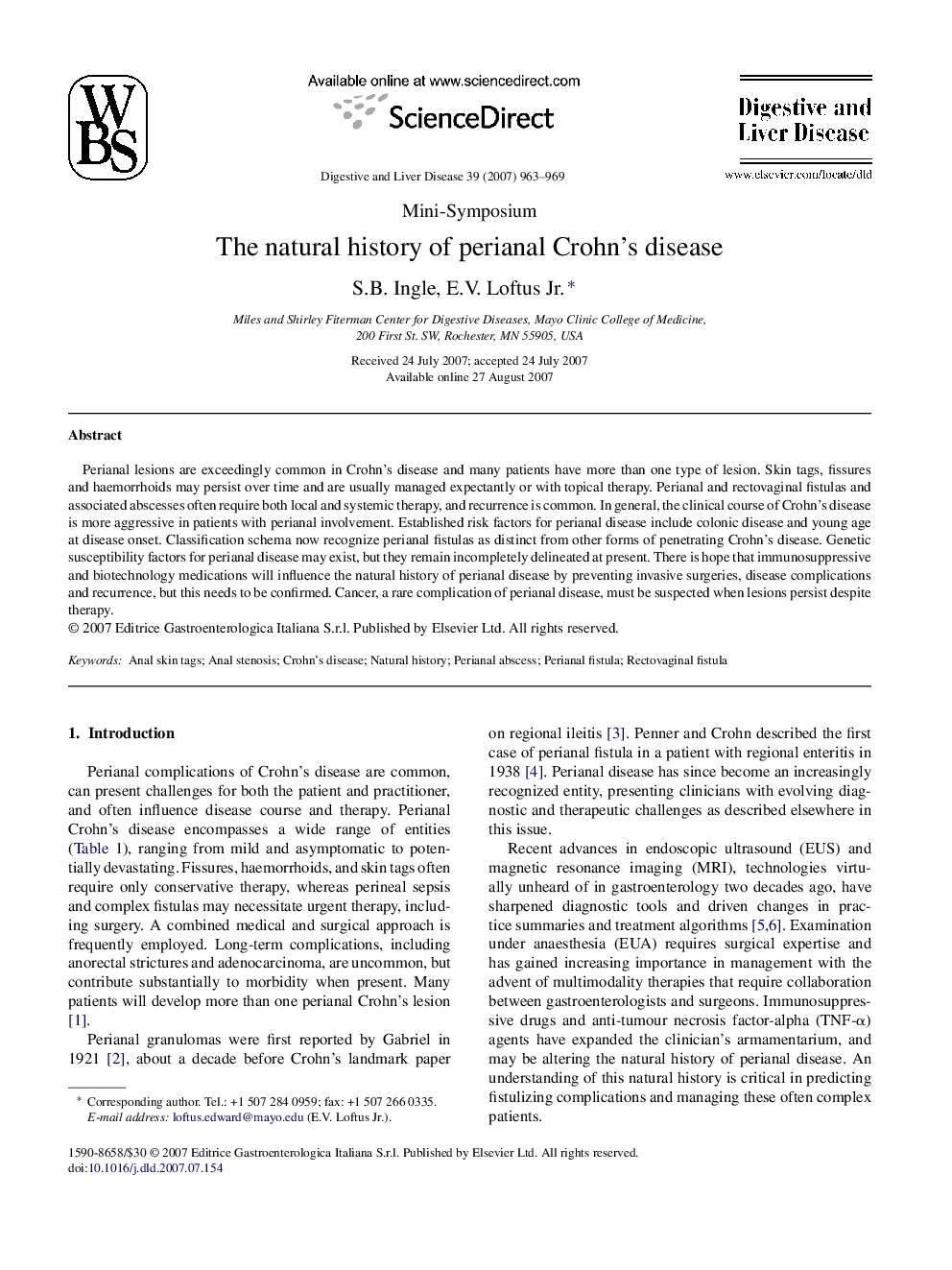| Article ID | Journal | Published Year | Pages | File Type |
|---|---|---|---|---|
| 3266017 | Digestive and Liver Disease | 2007 | 7 Pages |
Perianal lesions are exceedingly common in Crohn's disease and many patients have more than one type of lesion. Skin tags, fissures and haemorrhoids may persist over time and are usually managed expectantly or with topical therapy. Perianal and rectovaginal fistulas and associated abscesses often require both local and systemic therapy, and recurrence is common. In general, the clinical course of Crohn's disease is more aggressive in patients with perianal involvement. Established risk factors for perianal disease include colonic disease and young age at disease onset. Classification schema now recognize perianal fistulas as distinct from other forms of penetrating Crohn's disease. Genetic susceptibility factors for perianal disease may exist, but they remain incompletely delineated at present. There is hope that immunosuppressive and biotechnology medications will influence the natural history of perianal disease by preventing invasive surgeries, disease complications and recurrence, but this needs to be confirmed. Cancer, a rare complication of perianal disease, must be suspected when lesions persist despite therapy.
